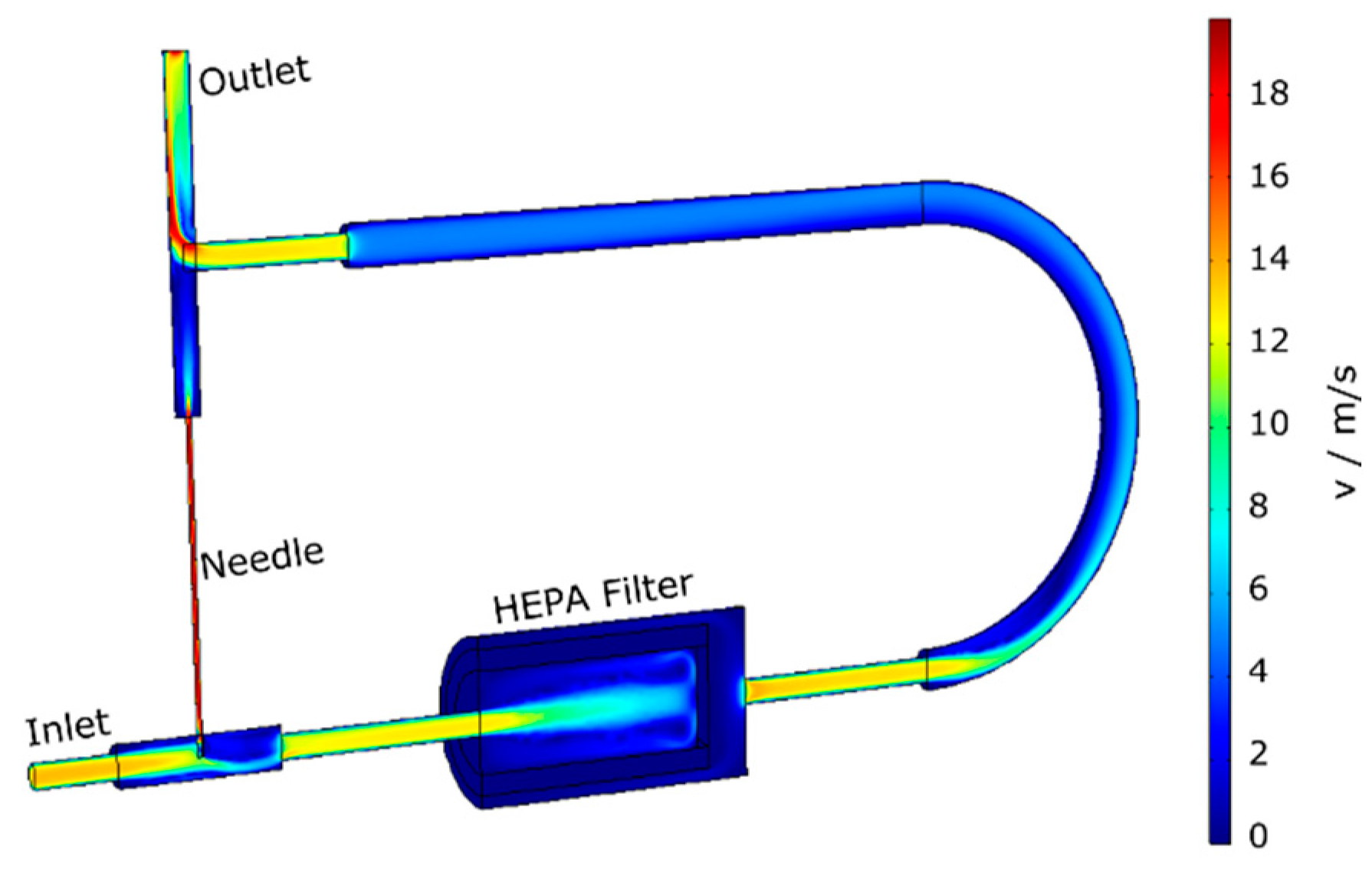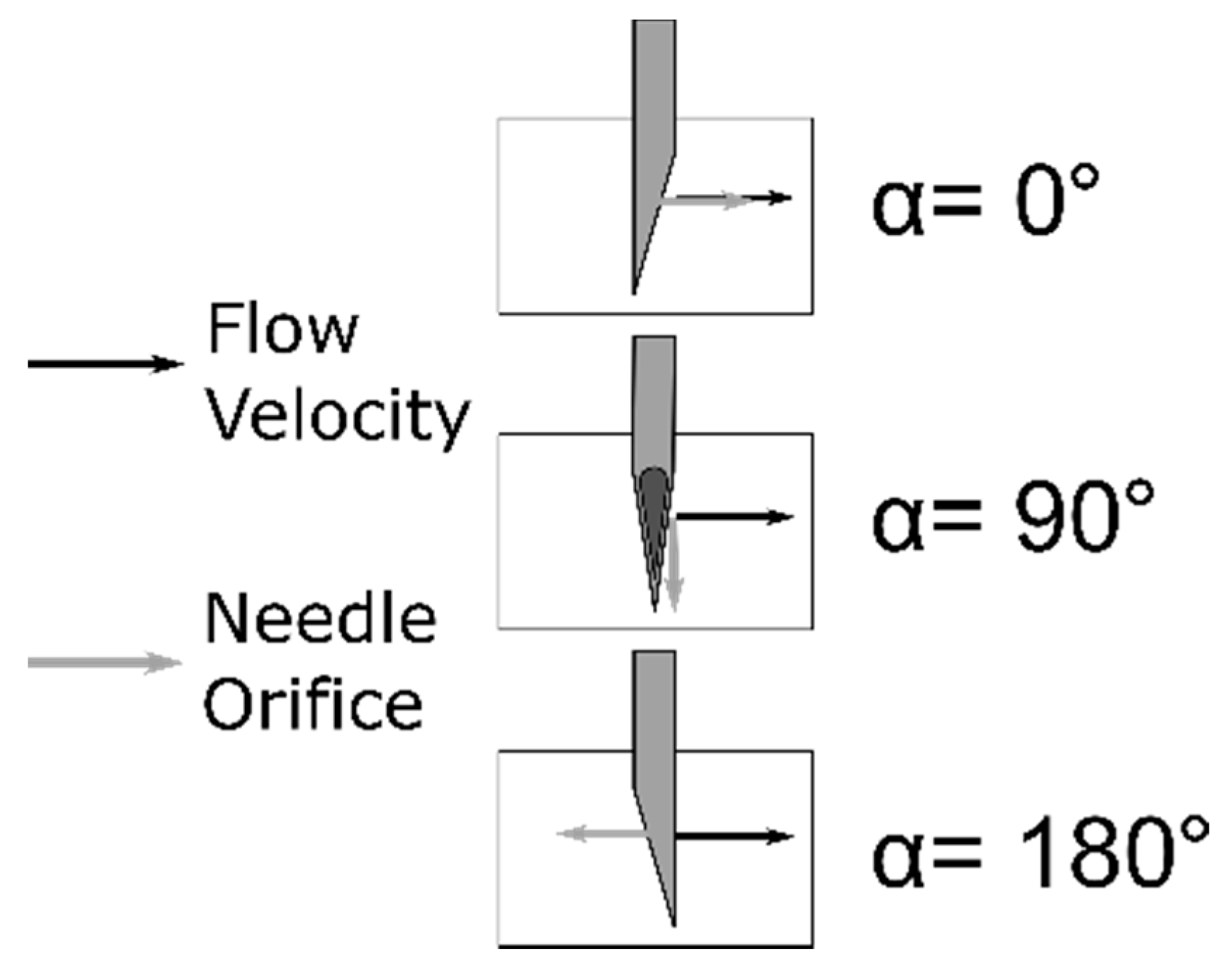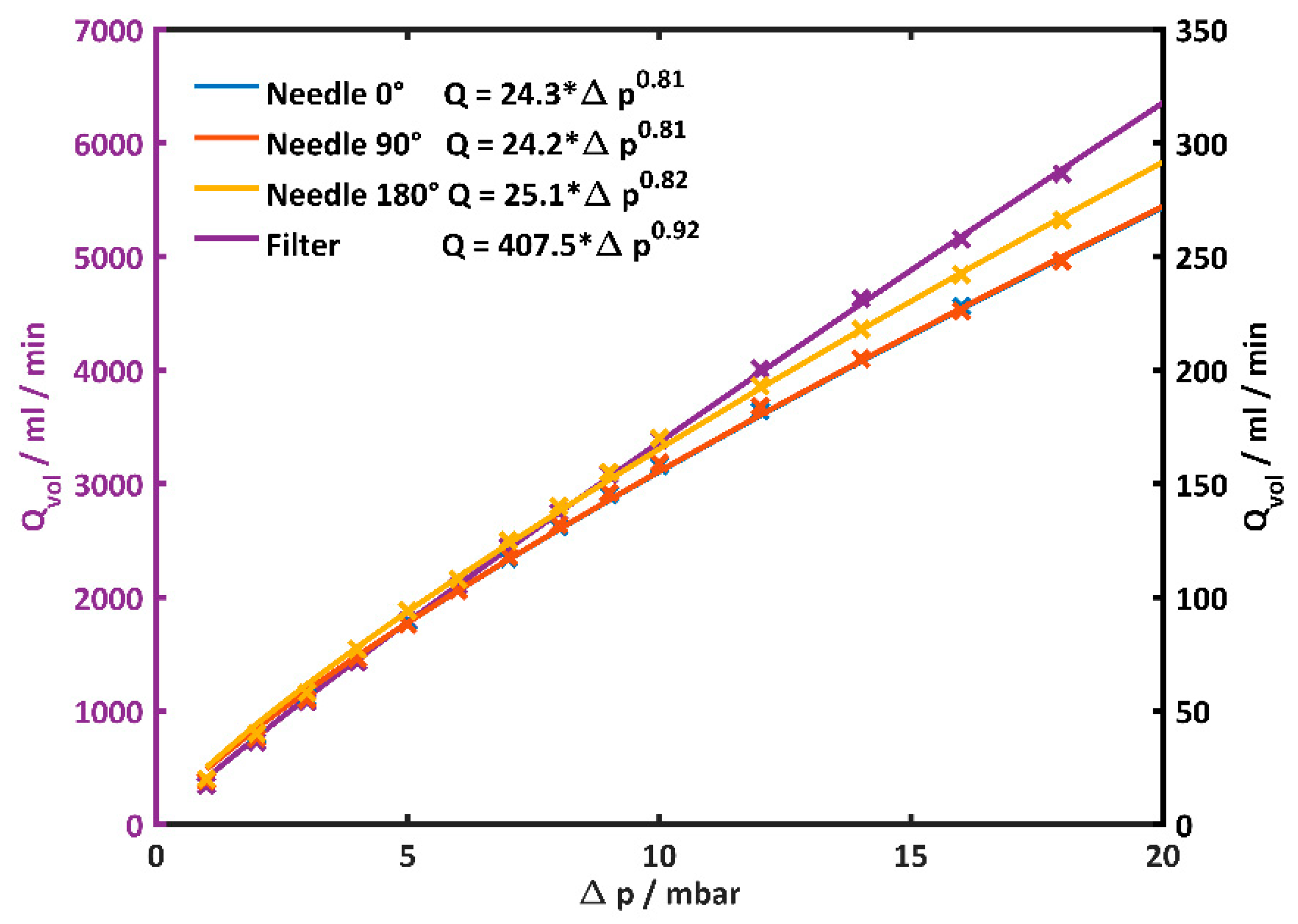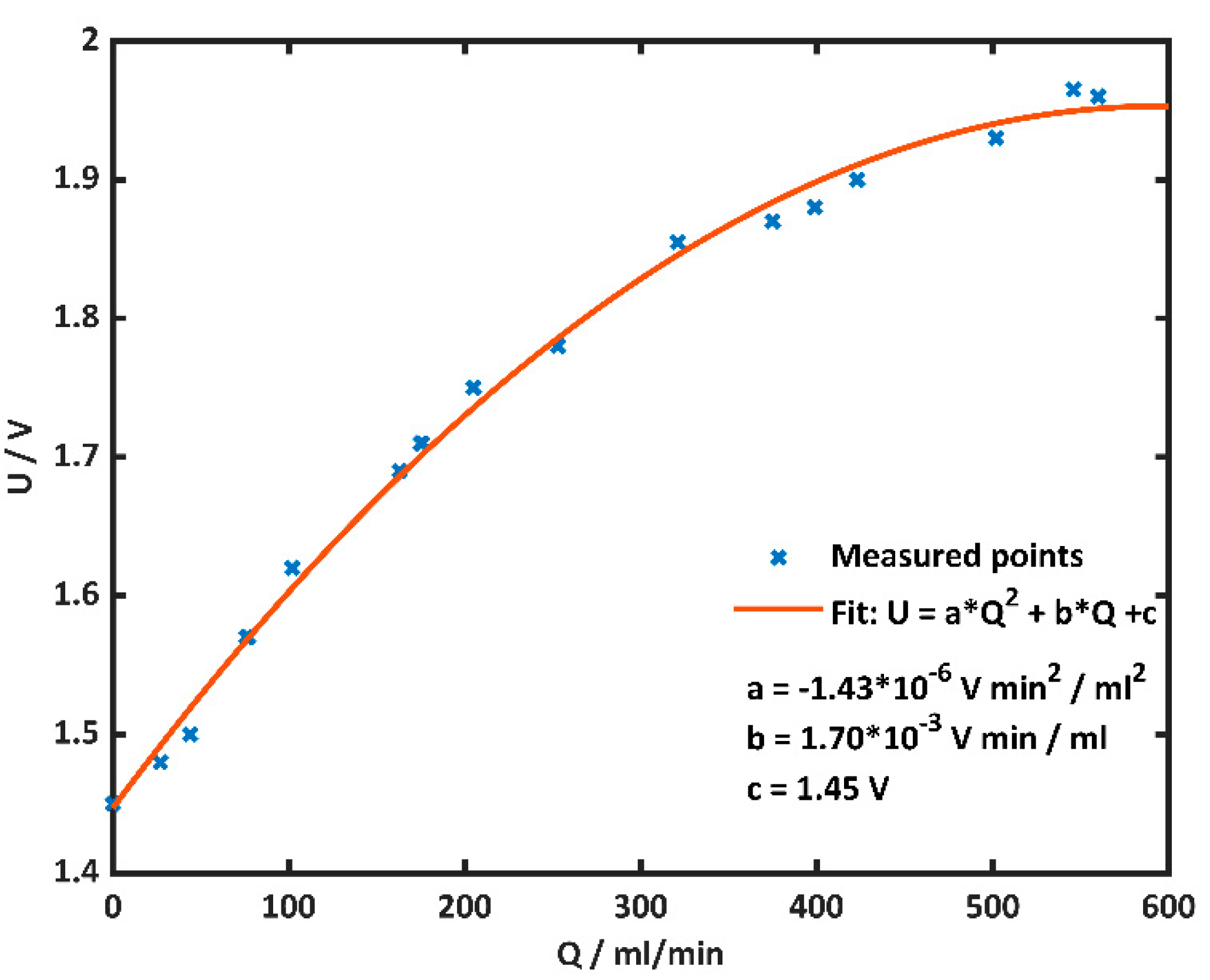An Intrinsically Pressure Insensitive Low Cost Particle Number Diluter Featuring Flow Monitoring †
Abstract
:1. Introduction
2. Results
2.1. Theoretical Description
2.2. Dilution Ratio in Simulation and Experiment
2.3. Flow Monitoring
3. Conclusions and Outlook
Author Contributions
Funding
References
- Giechaskiel, B.; Dilara, P.; Sandbach, E.; Andersson, J. Particle measurement programme (PMP) light-duty inter-laboratory exercise: comparison of different particle number measurement systems. Meas. Sci. Technol. 2008, 19, 095401. [Google Scholar] [CrossRef]
- Bergmann, M.; Vogt, R.; Szente, J.; Maricq, M.; Benter, T. Using ejector diluters to sample vehicle exhaust at elevated pressures and temperatures. SAE Int. J. Engines 2008, 1, 1167–1178. [Google Scholar] [CrossRef]
- Fuchs, N.; Sutugin, A. Coagulation rate of highly dispersed aerosols. J. Colloid Sci. 1965, 20, 492–500. [Google Scholar] [CrossRef]
- Brown, G.O. The history of the Darcy-Weisbach equation for pipe flow resistance. In Environmental and Water Resources History; American Society of Civil Engineering: Washington, DC, USA, 2003; pp. 34–43. [Google Scholar]
- Al-Hussainy, R.; Ramey, H., Jr.; Crawford, P. The flow of real gases through porous media. J. Pet. Technol. 1966, 18, 624–636. [Google Scholar] [CrossRef]






Publisher’s Note: MDPI stays neutral with regard to jurisdictional claims in published maps and institutional affiliations. |
© 2018 by the authors. Licensee MDPI, Basel, Switzerland. This article is an open access article distributed under the terms and conditions of the Creative Commons Attribution (CC BY) license (http://creativecommons.org/licenses/by/4.0/).
Share and Cite
Bainschab, M.; Bergmann, A. An Intrinsically Pressure Insensitive Low Cost Particle Number Diluter Featuring Flow Monitoring. Proceedings 2018, 2, 981. https://doi.org/10.3390/proceedings2130981
Bainschab M, Bergmann A. An Intrinsically Pressure Insensitive Low Cost Particle Number Diluter Featuring Flow Monitoring. Proceedings. 2018; 2(13):981. https://doi.org/10.3390/proceedings2130981
Chicago/Turabian StyleBainschab, Markus, and Alexander Bergmann. 2018. "An Intrinsically Pressure Insensitive Low Cost Particle Number Diluter Featuring Flow Monitoring" Proceedings 2, no. 13: 981. https://doi.org/10.3390/proceedings2130981




